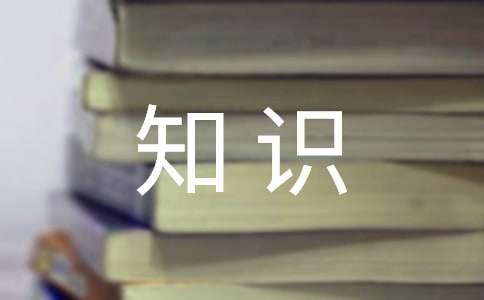- 相關推薦
2017小升初英語常考語法知識大全
為了幫助大家準備小升初英語考試,小編精心準備了一些常考英語語法知識,希望能幫到大家!

一.名詞:名詞單復數,名詞的格
(一)名詞單復數
1.一般情況,直接加-s,如:book-books, bag-bags, cat-cats, bed-beds
2.以s. x. sh. ch結尾,加-es,如:bus-buses, box-boxes, brush-brushes, watch-watches
3.以“輔音字母+y”結尾,變y為i, 再加-es,如:family-families, strawberry-strawberries
4.以“f或fe”結尾,變f或fe為v, 再加-es,如:knife-knives
5.不規則名詞復數:
man-men, woman-women, policeman-policemen, policewoman-policewomen, mouse-mice
child-children, foot-feet, tooth-teeth, fish-fish, people-people, Chinese-Chinese, Japanese-Japanese
不可數名詞的復數就是原型: paper, juice, water, milk, rice, tea
(二)名詞的格
(1) 有生命的東西的名詞所有格:
a) 單數后加 ’s 如: Lucy’s ruler my father’s shirt
b) 以s 結尾的復數名詞后加 ’如: his friends’ bags
c) 不以s 結尾的復數后加 ’s children’s shoes
并列名詞中,如果把 ’s加在最后一個名詞后,表示共有, 如:
Tom and Mike’s car 湯姆和邁克共有的小汽車
要表示所有物不是共有的,應分別在并列名詞后加’s
Tom’s and Mike’s cars 湯姆和麥克各自的小汽車
(2)表示無生命東西的名詞通常用“ of +名詞”來表示所有關系:如:
a picture of the classroom a map of China
二.冠詞:不定冠詞,定冠詞種類:
(1)不定冠詞:a / an a unit / an uncle
元音開頭的可數名詞前用an :
an egg / an apple / an orange / an eraser / an answer / an ID card / an alarm clock / an actor / an actress /
an e-mail / an address / an event / an example / an opera / an houran old man / an interesting book / an
exciting sport / an action movie / an art lesson /
(2)定冠詞:the the egg the plane
2. 用法:
定冠詞的用法:
(1)特指某(些)人或某(些)物: The ruler is on the desk.
(2)復述上文提到的人或物:He has a sweater. The sweater is new.
(3)談話雙方都知道的人或物:The boys aren’t at school.
(4)在序數詞前: John’s birthday is February the second.
(5)用于固定詞組中: in the morning / afternoon / evening
不用冠詞的情況:
(1)專有名詞前:China is a big country.
(2)名詞前有定語:this , that , my , your , some, any , no 等:
This is my baseball.
(3)復數名詞表示一類人和事:Monkeys can’t swim. They are teachers.
(4)在節日,日期,月份,季節前:Today is Christmas Day. It’s Sunday.
(5)一日三餐前:We have breakfast at 6:30.
(6)球類 棋類運動前:They often play football after class. He plays chess at home.
* 但樂器前要用定冠詞:I play the guitar very well.
(7)學科名稱前:My favorite subject is music.
(8)在稱呼或頭銜的名詞前:This is Mr Li.
(9)固定詞組中:at noon at night by bus
三、代詞:人稱代詞,物主代詞
人稱代詞 物主代詞
主格 賓格
第一
人稱 單數 I(我) me my(我的)
復數 we(我們) us our(我們的)
第二
人稱 單數 you(你) you your(你的)
復數 you(你們) you your(你們的)
第三
人稱 單數 he(他) him his(他的)
she(她) her her(她的)
it(它) it its(它的)
復數 they(他們/她們/它們) them their(他們的/她們的/它們的)
四、形容詞,副詞:比較級,最高級
(一)、形容詞的比較級
1、形容詞比較級在句子中的運用:兩個事物或人的比較用比較級,比較級后面一般帶有單詞than。比較級前面可以用more, a
little來修飾表示程度。than后的人稱代詞用主格(口語中可用賓格)。
2.形容詞加er的規則:
⑴ 一般在詞尾加er ;
⑵ 以字母e 結尾,加r ;
⑶ 以一個元音字母和一個輔音字母結尾,應雙寫末尾的輔音字母,再加er ;
⑷ 以“輔音字母+y”結尾,先把y變i,再加er 。
3.不規則形容詞比較級:
good-better, beautiful-more beautiful
(二)副詞的比較級
1.形容詞與副詞的區別 (有be用形,有形用be;有動用副,有副用動)
⑴在句子中形容詞一般處于名詞之前或be動詞之后
⑵副詞在句子中最常見的是處于實義動詞之后
2.副詞比較級的變化規則基本與形容詞比較級相同 (不規則變化:well-better, far-farther)
五 數詞:基數詞,序數詞一、基數詞
(1)1-20
one,two,three,four,five,six,seven,eight,nine,ten,eleven,twelve,thirteen,fourteen,fifteen,
sixteen,seventeen,eighteen,nineteen,twenty
(2)21-99 先說“幾十”,再說“幾”,中間加連字符。
23→twenty-three,34→thirty-four,45→forty—five,56→fifty-six,67→sixty-seven,78→seventy-eight,89→
eighty-nine,91→ninety-one
(3)101—999先說“幾百”,再加and,再加末兩位數或末位數;
586→five hundred and eighty-six,803→eight hundred and three
(4)l,000以上,先從右往左數,每三位數加一個“,”,第一個“,”前為thousand.第二個“,”前為million,第三個“
,”前為billion
1,001→one thousand and one
18,423→eighteen thousand,four hundred and twenty-three
6,260,309→six million two hundred and sixty thousand three hundred and nine
750,000,000,000→seven hundred and fifty billion
二、序數詞
(1)一般在基數詞后加th
eg.four→fourth,thirteen→thirteenth
(2)不規則變化
one→first,two→second,three→third,five→fifth,eight→eighth,nine→ninth,twelve—twelfth
(3)以y結尾的十位整數,變y為ie再加th
twenty→twentieth, forty→fortieth, ninety→ninetieth
(4)從二十一后的“幾十幾”直至“幾百幾十幾”或“幾千幾百幾十幾”只將個位的基數詞變為序數詞。
twenty-first,two hundred and forty-fifth
基數詞轉為序數詞的口訣:
基變序,有規律,詞尾加上-th.
一,二,三,特殊記,詞尾字母t,d,d.
八去t,九去e, ve要用f替。
ty將y變成i,th前面有個e.
若是碰到幾十幾,前用基來后用序。
六、介詞:常用介詞:in, on, at, behind等
1.at表示時間概念的某一個點。(在某時刻、時間、階段等)。
??at 1:00(dawn,midnight,noon)在一點鐘(黎明、午夜、中午) ??
2.on
1)表示具體日期。
注:(1)關于"在周末"的幾種表示法:
??at(on)the weekend?在周末---特指
??at(on)weekends?在周末---泛指
??over the weekend?在整個周末
??during the weekend?在周末期間
? (2)在圣誕節,應說at Christmas?而不說on Christmas?
2)在(剛……)的時候。
On reaching the city he called up his parents.
一到城里他就給父母打了一個電話。
3.in
1)表示"時段"、"時期",在多數情況下可以和during互換,前者強調對比,后者強調持續。 in(during)1988(December,
the 20th century)在一九八八年(十二月、二十世紀)
七、動詞:動詞的四種時態:
(1)一般現在時:
一般現在時的構成
1. be動詞:主語+be(am, is, are)+其它。如: I am a boy. 我是一個男孩。
2. 行為動詞:主語+行為動詞(+其它)。 如: We study English. 我們學習英語。
當主語為第三人稱單數(he, she, it)時,要在動詞后加"-s"或"-es"。如:Mary likes Chinese.瑪麗喜歡漢語。
動詞+s的變化規則
1.一般情況下,直接加-s,如:cook-cooks, milk-milks
2.以s. x. sh. ch. o結尾,加-es,如:guess-guesses, wash-washes, watch-watches, go-goes
3.以“輔音字母+y”結尾,變y為i, 再加-es,如:study-studies
(2)一般過去時:
動詞過去式詳解 動詞的過去式的構成規則有:
A、規則動詞
① 一般直接在動詞的后面加ed:如 worked , learned , cleaned , visited
② 以e結尾的動詞直接加d:如 lived , danced , used
③ 以輔音字母加y結尾的動詞要改y為i再加ed(此類動詞較少)如 study – studied carry – carried worry –
worried (注意play、stay不是輔音字母加y,所以不屬于此類)
④ 雙寫最后一個字母(此類動詞較少)如 stopped
B、不規則動詞(此類詞并無規則,須熟記)小學階段要記住以下動詞的原形和過去式:sing – sang , eat – ate ,
see – saw , have – had , do – did , go – went , take – took , buy – bought , get – got , read – read
,fly – flew , am/is – was ,
are – were , say – said , leave – left , swim – swam , tell – told , draw – drew , come – came , lose
– lost , find – found , drink – drank , hurt – hurt , feel – felt
(3)一般將來時:
基本結構: ①be going to + do;
②will+ do. be going to = will
I am going to go swimming tomorrow(明天). = I will go swimming tomorrow.
(4)現在進行時: am,is,are+動詞現在分詞
動詞現在分詞詳解 動詞的ing形式的構成規則:
① 一般的直接在后面加上ing , 如doing , going , working , singing , eating
② 以e 結尾的動詞,要先去e再加ing ,如having , writing
③ 雙寫最后一個字母的(此類動詞極少)有:running , swimming , sitting , getting
第三部分:句法
1.陳述句
(1)肯定句:是指用肯定的語氣來陳述的句子,如:I’m a student. She is a doctor. He works in a hospital.
There are four fans in our classroom. He will eat lunch at 12:00. I watched TV yesterday evening.
(2)、否定句:含有否定詞或表示否定意義詞的句子,如:I’m not a student. She is not (isn’t) a doctor.
He does not (doesn’t) work in a hospital. There are not (aren’t) four fans in our classroom.
He will not (won’t) eat lunch at 12:00. I did not (didn’t) watch TV yesterday evening.
2. 疑問句
一般疑問句:是指詢問事實的句子,此類句子必須用“yes”,或“no”來回答。
特殊疑問句:以特殊疑問詞(what , where , who , which , when , whose , why , how等)開頭引導的句子。此類句子應該
問什么就答什么,不能用“yes 、no”來回答。
3.There be句型
There be 句型與have, has的區別
1、There be 句型表示:在某地有某物(或人)x kb 1.c om
2、在there be 句型中,主語是單數,be 動詞用is ; 主語是復數,be 動詞用are ; 如有幾件物品,be 動詞根據最*近be 動
詞的那個名詞決定。
3、there be 句型的否定句在be 動詞后加not , 一般疑問句把be 動詞調到句首。
4、there be句型與have(has) 的區別:there be 表示在某地有某物(或人);have(has) 表示某人擁有某物。
5、some 和any 在there be 句型中的運用:some 用于肯定句, any 用于否定句或疑問句。
6、and 和or 在there be句型中的運用:and 用于肯定句, or 用于否定句或疑問句。
7、針對數量提問的特殊疑問句的基本結構是:
How many + 名詞復數 + are there + 介詞短語?
How much + 不可數名詞 + is there + 介詞短語?
8、針對主語提問的特殊疑問句的基本結構是:
What’s + 介詞短語?
【小升初英語常考語法知識】相關文章:
小升初語文常考知識常識01-27
中考英語常考英語語法02-22
2017小升初英語語法十個常考知識點03-03
小升初英語常考的十大知識點01-24
小升初英語五大常考知識點03-04
2017小升初英語常考知識點03-04
2016英語六級語法常考知識講解03-14
小升初英語考試三大常考知識點02-13
小升初英語考試的10個常考知識點03-09